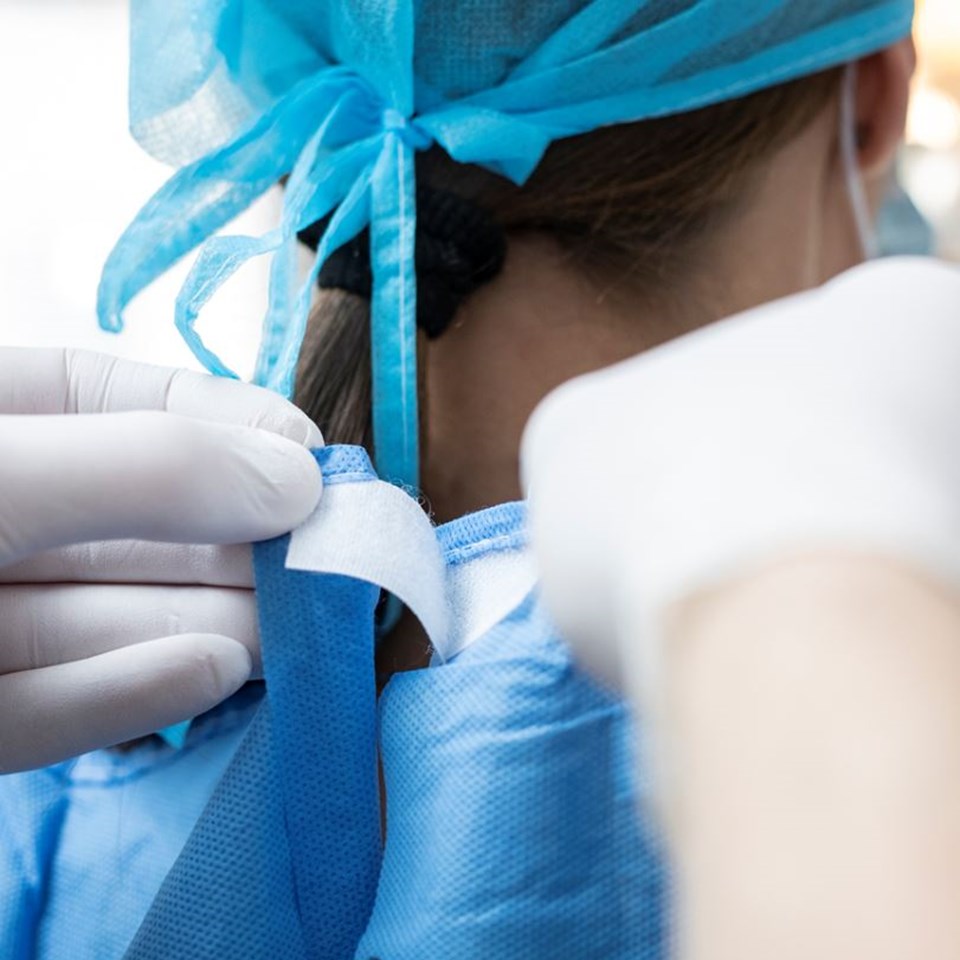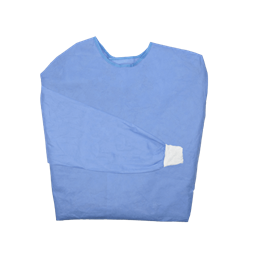
What are the main features of surgical gowns? Which are the international standards they need to be compliant with in order to enter the market and ensure the utmost safety? Dispotech will address all of your doubts on this page.
Surgical gowns are paramount in the healthcare industry. This is not just a device which protects professionals during surgery, but it is also crucial to prevent viruses and cross-contamination even patient-wise.
On this page, we will learn about:
Surgical gowns are manufactured to shield professionals who work on a daily basis in the medical field. But this is not it.
These gowns have a high level of protection towards highly infectious and contaminated contexts, being water-repellent, and thus reducing liquid-transfer in fluids’ exposed environments.
Surgical gowns are sterile, and they have been carefully designed to meet the stringent requirements of the healthcare industry. They also enable the operating room professionals to successfully perform surgery whilst ensuring doctors’ comfort at all times. This feature is key, especially during long interventions which require a high degree of accuracy and dexterity.
Medical gowns guarantee the patients’ safety, as well, as it acts like a barrier against all sorts of external bacteria or contaminants that can compromise surgical interventions.
Due to their crucial role, disposable surgical gowns are transversal and can serve a multitude of medical scenarios. In fact, they can be easily integrated in public hospitals as well as in private clinics.
Surgical gowns as medical products need to be manufactured so that they can fulfil the basic standards stipulated on an international level. From this point of view, different product qualities rank surgical gowns into:
Morevover, there are other relevant characteristics to take into account when it comes to choosing surgical devices such as gowns. These are:
Surgical gowns are key in maintaining the environment sterile during medical procedures and should always guarantee the utmost safety and effectiveness. For this reason, they need to be compliant with stringent standards and regulations, such as:
It’s useful to pinpoint the correct usage of surgical gowns in order to wear them and dispose of them properly. These steps are critical to prevent contamination and maintain the hospital or clinic safe.

At Dispotech, we are committed to manufacturing surgical gowns which entail quality, comfort and polyvalence.
Our PERFECTO has been designed both for professionals and patients that find themselves in environments with a high and low contamination risk.
Dispotech disposable surgical gowns are manufactured in SMS, a material that ensures:
Do you want to know more about our surgical gown PERFECTO?
Discover more